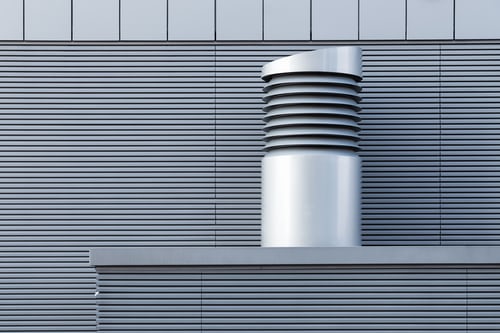How To Tell If a Building Has Good Ventilation
People spend most part of their day indoors, either at home or at offices. In that case, when you’re at work, the inside environment should be work-friendly for more productivity. To do so, air quality matters a lot in making the workplace comfortable, healthy, and productive for employees.
However, there are more pollutants inside a building than outside. As a result, it can lead to severe health conditions besides affecting workers’ productivity inside the building. On the contrary, many offices have maintained healthy ventilation to provide a friendly work environment which is healthy as well.
The question arises, how would you know if the environment inside the building is ventilated enough or not as you would be breathing the same air in both cases. To answer this question, we came across some of the fresh air requirements for offices listed below to give you a clear idea of a building’s good ventilation.
Fresh Air Requirements for A Good Ventilation
Mainly five factors play an important role in determining the air quality, including odor, CO2, indoor pollutants, cigarette smoke, and oxygen. We will go through each in detail.
- Odor
It starts with an inside odor that you feel, and it can be kept fresh only when fresh air is continuously changing through exhausts. For instance, the toilet’s smell is expelled using exhaust while circulating the air to ensure you can breathe the inside air. So, even if you spray fragrance multiple times a day in the building, if the air isn’t circulating, it’s not fresh and healthy.
- Indoor Pollutants
According to a research study, the top five air quality problems in the USA are indoor air problems. It includes dust particles, pesticides, radon, combustion products, volatile organic compounds (VOCs), excessive moisture, viruses, and bacteria. All of these combine to pollute the inside environment while making the person inside the building sick and discomforting the workplace. So, we can conclude that for good ventilation and fresh air requirements, there must be as low as possible indoor pollutants.
- CO2
The safe limit of CO2 concentration inside the building lies between 1,000 to 1,500 ppm. However, outside air contains around 450 ppm. So, if the building exceeds the 1,500 ppm limit, it can be dangerous for the workers and lead to headaches, feeling drowsy, or function at lower activity levels. It means your productivity and your health will be badly affected under such circumstances. So, in simple words, consider 1,500 ppm as a maximum limit of CO2 in the air for good air quality.
- Cigarette Smoke
It’s one of the major sources that pollute the inside air as passive smoking leaves bad impacts on people around the active smoker. So, even if the air is circulating, there must be a limit to cigarette smoke inside the building. It can be at least 30 l/s/person to ensure the building has good air quality as well as ventilation.
- Oxygen
Since oxygen is the basic human body’s need, there’s no exception to its ratio in the fresh air. Typically, it requires less than 0.2 I/s/person of fresh air. However, it must be more than the minimum requirement for good ventilation.
Four Ways to Improve Building Ventilation
The efficient ventilation works to provide fresh and healthy air to breathe inside the building. The process involves moving inside air out and bringing fresh air from outside. Then distribute the fresh air throughout the building, so every person inside the walls can get the required air. So, if you’re struggling to improve the ventilation of your building, consider these effective ways to bring more outside fresh air.
- Mechanical Ventilation
Sometimes opening windows and letting outside fresh air come inside can be a big relief. Unfortunately, it doesn’t work all the time, especially in buildings where there’s no window. In that case, you need mechanical ventilation that includes heating, cooling, and humidity control to manage the entire building ventilation.
- Natural Ventilation
If you can’ afford the mechanical ventilation or it doesn’t work in your building, nature covers you here. The best alternative is natural ventilation, where you allow natural forces, such as winds and thermal buoyancy let inside the building through a purpose-built opening. It can be windows, doors, chimneys, or trickle ventilators. The biggest advantage of this ventilation system is the lowest cost among all ventilation systems.
- Hybrid Ventilation
There’s a third option where you can combine mechanical and natural ventilation. It’s known as hybrid ventilation. However, it utilizes natural ventilation as much as possible to provide a healthy indoor climate and delivers with minimal energy consumption.
- Spot Ventilation
Spot ventilation involves the use of localized exhaust fans to quickly remove pollutants at the source, such as the kitchen can be the source for a restaurant. When it comes to installing the fans, they are installed in duct runs and at termination points. For a while building ventilation systems, central multipoint fans can have more than one duct connection point.

